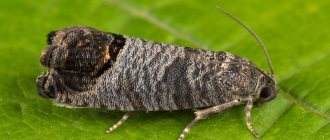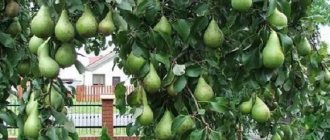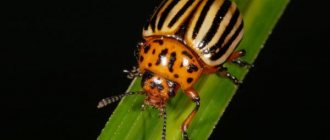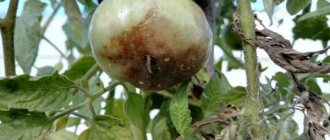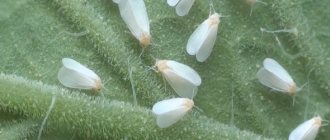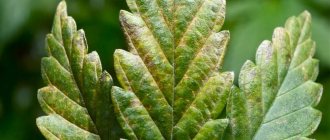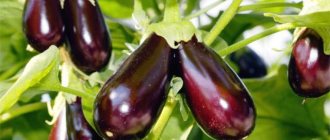Vegetable crop pest
- Fact:
Epilyachna looks like an ordinary ladybug, but it has 28 points on its wings. - Fact 2:
The insect causes the greatest damage to plantings at the stage of larval growth and before finally leaving the field for the winter. - Fact 3:
The danger of the cow is also that it is a carrier of viral infections dangerous to plants. - Fact 4:
If you keep your area weed-free, you can significantly reduce the risk of potato beetle infestation.
Potatoes have been and remain one of the most important vegetable crops in the garden. “If we have potatoes, we’ll live,” many say, and they are partly right. Potatoes are cheap, tasty and filling. Gardeners monitor the planting of their favorite vegetable zealously and carefully. But harmful pests are also not averse to feasting on this plant. One of them is called the potato cow. Or in scientific epilyakhna.
Potato ladybird or 28-spot ladybird (Epilachna vigintioctomaculata Motsch.)
In the Far East, this ladybird occupies a place that in the European part has long belonged to the Colorado potato beetle, the main eater of potato leaves.
Here it is the main pest of this important agricultural crop. Spreading. Vegetarian species are rarely found among ladybirds. One of the few is the 28-spotted potato ladybird, or epilahna. It is widespread here in the Primorsky and Khabarovsk Territories, in the Amur Region, in the south of Sakhalin and on the South Kuril Islands. Epilahna also lives in adjacent territories: in Northeast China, northern Japan, and the Korean Peninsula.
In habitats, the number of potato ladybugs is usually very high. But, unlike the North American “striped robber” (which will be discussed later), this widespread species in its food preferences is not limited to potatoes: among its favorite food plants are tomatoes, cucumbers, and watermelons. You can often find a ladybird eating on corn, sunflowers, pumpkins, soybeans, and even on some woody plants.
External signs. The potato ladybug reaches 0.5 cm in length, has a strongly convex body of a red-brown color with a characteristic whitish coating. Examining the integument of the beetle through a magnifying glass, it is clear that this coating is nothing more than tiny hairs. It goes without saying that there are 28 black spots on the elytra. But this was not enough for nature, and she awarded the beetle with three more black spots, placing them on the pronotum.
Lifestyle. Cows are perfectly adapted to life in harsh local conditions: in winter the temperature here can drop to minus 45°C. For the winter, adult beetles climb into warm shelters: in the forest - under leaves, on the edges of fields - under various plant debris and dried weeds. Some choose even more reliable protection and bury themselves in the soil for the winter.
In the spring, usually in mid-May, as soon as the warm rays of the sun begin to warm the frozen nature, the beetles emerge from their wintering places and, having warmed up a little, fly to the potato fields, where they greedily pounce on young shoots. After some time, the females begin laying eggs. The fertility of epilachnae females is enormous: there is evidence that some “heroine mothers” are capable of laying up to 2 thousand eggs. But the female will never lay all her eggs in one place. As if taking into account the possible danger to its offspring from numerous enemies, it lays its soft, defenseless eggs on the leaves in small piles, 20-30 pieces each.
Pale yellowish, oblong-shaped, with a pointed tip, the eggs develop in about 10 days. The yellowish-green larvae that emerge have the usual elongated shape for coccinellids. Their appearance is frightening: the entire body of these little ones is covered with black bristles sticking out in different directions. Of course, this is also a kind of protective device. The bristles are soft and are unlikely to interfere with a bird that wants to feast on the larva. But they look like real thorns and probably scare off many birds.
Like all other insects, the main occupation of epilachnes larvae is food. And throughout their entire life, and they live for about a month, the larvae constantly chew the leaves of plants.
Finally it's time to pupate. This mystery occurs on the underside of the leaves of food plants. For a whole week, during which the pupal stage lasts, epilahne freezes. But under the chitinous cover, the process of metamorphosis does not stop for a second - the transformation of a larva into an adult beetle. And finally, the skin of the pupa bursts, and a young beetle emerges into the light of day. Having got out of the dry skin - exuvia, he enters a huge, new world for him, full of dangers.
Before leaving for the winter, young beetles, just like bears before hibernation, accumulate “fat” and feed for some time. And only from mid-August, with the advent of the first cold weather, do they leave their feeding areas in search of reliable places for long winter hibernation.
Article on the topic: Mineral fertilizer for potatoes: types, timing and application rates
Typically, epilahna develops in one generation per year, but in warm years it can form three. In this case, the second generation appears in June, and the third in late July - early August.
Role in nature. Epilahne is very gluttonous. During the period of development, the larva eats an average of 21.2 cm2 of leaf (slightly less than the larva of the Colorado potato beetle: it eats up to 27.8 cm2). Beetles and larvae eat away the parenchyma (soft tissue of the leaf), leaving the veins intact. As a result, only one skeleton remains from the leaf, which is why this type of damage is called skeletonization. Skeletonized leaves quickly turn yellow and die.
Epilahna causes the greatest damage to cultivated plants from the beginning of May to the end of June. The potato fields inhabited by it quickly become bare and take on an “autumn look,” as if inviting them to harvest. But this impression, alas, is deceptive. Due to severe damage to the foliage, the tubers do not reach their normal size, and many do not ripen at all. Don't expect a good harvest.
Not only does the potato ladybug eat potato leaves, it also carries viruses on its body - the causative agents of dangerous potato diseases. Having had breakfast on a plant infected with a viral disease, for lunch it flies to a neighboring, healthy one. At the same time, we can certainly assume that by the time dinner arrives, the formerly healthy potato plant has already received a dangerous viral “vaccination” and will inevitably fall ill.
The potato ladybug became a pest relatively recently. This is generally a forest species. In Primorye, two or three beetles can always be found in clearings among the forest. Here they feed on various weeds from the pumpkin and nightshade families. When people began to plant crops in such clearings, the beetles “decided” that they were no less, and perhaps even more tasty and nutritious than “savage” plants. Having gotten used to the new food, they gradually began to fly out of the forest into the fields, where they purposefully looked for the cultivated plants they loved.
There is an assumption that it was not only the abundance of nutritious food, which provides the opportunity for a well-fed life, that turned a relatively rare species into a mass species in a short period of time. Another circumstance could have contributed to this. The fact is that in the natural habitats of the cow, in the forests, many different parasitic and predatory insects live at its expense. They eat and destroy the ladybug in large quantities, acting as natural regulators of its population. All of them are forest species and regulate the number of ladybirds in the forest. “Coming out of the forests,” the cow seemed to escape from the encirclement of her enemies, who can only exist in the forest. And in the fields, no longer restrained by anyone, it began to multiply uncontrollably.
Further we learn that a similar thing happened with the Colorado potato beetle, which, however, made a more thorough jump: not from the forest hills to the surrounding fields, but from the wild Mexican highlands to the center of civilized Europe.
A story for children about a ladybug
These little bugs have a very attractive bright appearance. Their coloring is memorable at first sight. These insects have long earned human interest.
In many countries, various legends and superstitions are associated with them; people came up with proverbs and fairy tales about them.
We call them “ladybugs”. In some countries of Eastern Europe, these bugs are affectionately called “sun”, and in Western Europe - “Virgin Mary’s bug”.
Where do the bugs live? Everywhere except Antarctica. They are also found here, in the countries of Northern, Western and Eastern Europe, India, Great Britain, Italy and France.
Why are bugs called ladybugs? God's means meek, safe. Why a cow if it's a beetle? When it sits calmly in a person's palm, it is safe. And as soon as you press it a little, the insect secretes a yellow “milk” liquid. That's why they called her ladybug.
In general, beetles are predators. Ladybugs or coccenilides (as the family of beetles is called in Latin), like their larvae, feed mainly on aphids. For this they are also called aphid beetles. In addition to aphids, ladybugs and their larvae destroy scale insects, spider mites, small caterpillars, and egg-laying insects, i.e. the most dangerous agricultural pests.
The bugs are very active, run quickly through plants and can fly long distances.
Bugs have a very enviable appetite. Each person needs fifty aphids a day.
Ladybug larvae also do not complain of lack of appetite: about a thousand aphids are required for their development. The larvae grow very quickly. Several generations can develop in a year.
Appearance of a ladybug
The insects look very bright. Their round backs are red, orange or yellow and covered with dotted spots. There can be a different number of points. There are individuals with two points, with 12, 30. The most common is the seven-spot ladybird.
By the way, the 28-spotted individual is a vegetarian and a pest: it eats potatoes, beets and clover.
Bright signs make ladybugs easily recognizable even by small children.
Entomologists also consider those with commas and dashes on their backs to be ladybugs, while others have a bizarre pattern. There are beetles even in a black outfit, and not just in a red or yellow suit. And they also have pea dots. There are more than 4,000 different species of ladybugs.
Ladybugs have a head, pronotum, thorax, abdomen, 3 pairs of legs, hard elytra and transparent wings, with the help of which the insect flies. Large eyes and movable antennae.
The bug flies with the help of two hind wings, and the hard elytra serve as protection.
Video - slow motion of a ladybug taking off
During flight, the insect makes up to 85 strokes per second. And it will be interesting for children to see that under the hard elytra there are transparent wings with the help of which the insect flies.
Why does an insect need such a bright outfit? To protect yourself from enemies! This is a warning coloring: “I am not edible!” it says.
If you pick up a bug and inadvertently press it, it will release an orange drop. It contains the poison cantharidin. it is not dangerous for people, but if a bird grabs a ladybug, it will burn its throat so much that it will no longer want to touch it. This is how the little insect feels safe.
How does a ladybug develop?
In the spring, insects begin to have trouble breeding offspring. They are looking for a mate. The female lays up to 400 yellow eggs on the leaves of plants.
The female, taking care of her offspring, chooses plants that grow near the habitats of aphids. After 1-2 weeks, larvae emerge from the eggs. They first feed on the egg shell, as well as unfertilized eggs. Then they get to the aphids. The larval stage lasts 4-7 weeks. When the larvae accumulate nutrients, they turn into pupae. The pupa is attached to the leaf. After 7-10 days, an adult insect crawls out of the pupa shell. He doesn't have any spots yet. The bug sits and waits. Then the corresponding color and spots appear.
Adult beetles usually overwinter. They are thermophilic. If the climate is cold, ladybugs gather in flocks and fly to warmer climes. If they remain, they gather in colonies and hide under stones and tree bark and thus wait out the winter cold.
The benefits and harms of ladybugs
The gluttony of ladybugs brings great benefits to gardens and vegetable gardens in many countries. If one larva eats 50 aphids per day, then an adult insect eats up to 100 individuals.
The beetles are specially bred and then sprayed over gardens using aircraft.
But there are also harmful individuals that eat vegetables.
Potato ladybug (28 spot): description and control methods
Very soon it will be time to plant potatoes. But now the service of the Russian Agricultural Center is being contacted with the question of how to protect potato beds from the 28-spotted ladybug, scientifically called epilyachna. This small bug, which looks like an ordinary ladybug, is a terrible pest. And if you don’t know how to deal with it, it can ruin the entire potato harvest. Currently, the ladybug has occupied all areas of Primorye. In terms of lifestyle, gluttony and the amount of damage it causes, it is akin to the Colorado potato beetle.
Epilyakhna gives birth to one generation of offspring per summer, and overwinters under the litter on forest edges, or even right in fields and vegetable gardens under heaps of plant debris. Sometimes the pest is able to survive the winter even in the top layer of soil. The beetles of the 28-spot ladybird overwinter quietly at a temperature of –40 o C. The more snow, the better for it. For the second winter in Primorye there is no significant snow cover, which affected the severity in 2022. This year's winter with little snow allows us to hope that epilyachna will not survive the winter well and its emergence in 2022 will not be as widespread.
Article on the topic: Potato yield per 1 hectare in Russia and the world - analysis
The main food of epilyakhna is the tops of potato plants; the pest does not disdain the leaves of peppers, tomatoes, eggplants, cucumbers, pumpkins and their fruits, as well as corn and even soybeans. The 28-spotted ladybird does not eat the leaves entirely, but rather skeletonizes them, leaving hard veins. As a result, the eaten foliage turns yellow and falls off. Among other things, beetles spread dangerous infections. The level of starch in tubers decreases, and the harvest of root crops may not be obtained at all. The beetle destroys vegetables throughout the summer. Having damaged young potato leaves, females lay eggs. The cow's fertility is very high - females lay up to 2 thousand eggs. Clutches of 10-20 eggs can be found on the underside of potato leaves or in fallen leaves. Then light yellow round larvae up to 6 mm long emerge from them with rows of black spines, somewhat similar to “hedgehogs”. The larvae also intensively skeletonize the leaves, then pupate, and a new generation of beetles continues to destroy the vegetation.
Specialists from the Rosselkhozcenter recommend starting potato protection by treating the tubers. You can use a drug such as “Prestige, KS” (140+150g/l). This drug has a systemic effect and protects potatoes from pests and diseases. Dressing the tubers can make it possible to avoid treating the plantings with an insecticide in the future.
But if the pest still attacks, you can use insecticidal preparations. During the entire season, it is recommended to treat plants with chemicals no more than twice and preferably with different preparations. This will prevent pests from adapting to the effects of active substances.
It is worth paying attention to the exact dosage of the drug. Underfilling will reduce the effect, overfilling will jeopardize your health. You cannot use expired medications: you will add chemicals, but there will be no benefit. Spraying should be carried out at the beginning of the appearance of pests on plants before they spread en masse. Do not spray plants in strong winds or during hot times of the day, before or immediately after rain. These activities are best done in the early morning or evening. Spraying during flowering is unacceptable to avoid poisoning pollinating insects.
Uncertified drugs, especially those illegally imported from China, are completely prohibited. Pesticides, which have long been on the prohibited list in Russia, are allowed to be used there. For the private sector, in the fight against the 28-spotted ladybug, you can use the following drugs: “Commander”, “VRK”, “Iskra Zolotaya P”, “Tabu”, “VSK”, etc. For a more tangible result, it is best to carry out work to destroy the pest together with the neighbors. The first treatment with chemicals should be carried out from June 5 to 10, the second from June 20 to 25, the third treatment with “chemicals” in a private plot is prohibited, only two more treatments can be carried out with biological preparations, for example, “Fitoverm, KE” 2g/l.
It is worth remembering safety precautions when working with pesticides. Teenagers, pregnant and lactating women, and the sick should not work with pesticides. While working with chemical control agents, smoking and eating are prohibited. Spraying, preparing solutions and poisoned baits are carried out in special clothing, rubber gloves, and respirators. At the end of the work, you need to remove and wash your overalls, wash your face and hands thoroughly with warm water and soap.
There are many effective folk ways to combat the 28-spot ladybug. Thus, village residents shared their methods of protection without “chemicals”. Dusting the tops with wood ash at the rate of 3-5 kg per hundred square meters, spraying the plants with garlic infusion (crush 200-300 g of garlic arrows or old heads, pour 10 liters of water, leave for 2-3 days, strain before use), wormwood decoction (pour 1 kg of wormwood 2- 3 liters of water, boil for 15 minutes, strain the cooled broth and add water to 10 liters). Potatoes are treated with such means in early June, and then, if necessary, 1-2 more times with an interval of two weeks.
Another popular method of protection against the 28-point ladybug is «
harvest under the net
."
A regular greenhouse frame is built over a ridge of potatoes, but instead of a film, a protective nylon mesh is used (window mesh to protect against insects). The thinnest non-woven covering material such as agrotex is also suitable. The edges of the material must be sprinkled with soil to seal. Such a mesh will not allow insects to pass through, but water and air will pass through it freely. Potatoes under such cover will be environmentally friendly. If it is not possible to make a frame, you can simply throw a window net over a ridge with sprouting potatoes and sprinkle the edges with soil. We hope that the tips for protecting potatoes from the 28-spot ladybull will help preserve the harvest.
Related article: How to mash potatoes correctly and other secrets of delicious mashed potatoes
Close view
The two-spotted ladybug lives in Russia and throughout Central and Western Europe. The modest body size of 5 mm does not prevent the beetle from being an active destroyer of aphids in fields, gardens and parks. The insect was introduced to Australia for pest control. Ladybugs come in light and dark shapes. The first is tan or red in color, the second is black with red spots. The species is a known entomophage on fruit trees. The beetles prefer aphids that live on apple, plum and peach trees.
In mid-summer, two-spot ladybugs spread to other plants. They can be found on grain crops, grass, and vegetables. Fertile females lay up to 600 eggs. 2-3 generations are replaced per year.
Description and appearance
Epilyankha received its popular name (potato bug) due to its external resemblance to its more common beneficial cousin, the ladybug. Epilancha is a beetle with a body length of up to 7 mm. Unlike the ladybug, its wings are not bright red, but brown-brown. The number of black spots on them is exactly 28, which is why another name for the epilyankha is associated - the 28-spotted ladybug. Another characteristic feature of the pest is the thick pile on the chitinous covers, which from a distance can be mistaken for a whitish coating.
In the video, garden pests:
Not only beetles, but also their larvae also pose a danger to plants. In appearance, the larva resembles a short yellow-green caterpillar with long black fibers used for movement.
Lifestyle and habitat
Insects lead a solitary life, with the exception of the mating period and wintering. They are found in large numbers on forest edges and feel comfortable in meadow communities and in gardens.
Ladybugs in most cases benefit people by destroying aphids. There are known cases of deliberate breeding of these insects and their movement with the help of aviation to areas to control field pests.
Nature has reliably protected this insect from the encroachments of ill-wishers. The ladybug is so bright that it can scare away predators. But it’s not just the overly conspicuous coloring that plays a role here.
A good defense against potential attackers is the special natural liquid secreted by such insects in anticipation of danger. This is what is commonly called cow's milk.
In case of danger, the ladybug secretes a specific liquid
It has an unpleasant odor, is poisonous, has a yellow tint, and contains cantharidin. This milk repels all insidious predators, even the formidable tarantulas. And almost no one in nature dares to touch the harmless ladybug.
However, there is still a parasitic insect from which such creatures have no protection. These are dinocampuses. They gradually kill the cows and their pupae by placing their eggs there, which destroy them as they develop.
The habitat of ladybugs depends on their variety. Some of them are perfectly adapted to live in meadows near rivers and streams; others can only exist in trees. There are known varieties that settle only on certain types of flora, for example, aquatic plants, reeds, sedges, field grasses; some look for places where aphids accumulate because they feed on them.
In general, different types of ladybugs spend the cold season in their own way. Those of them that have adapted to life in temperate areas and are sedentary usually choose convenient shelters from winds and frosts: terraces, garages, barns, houses.
Sometimes, in search of shelter, they unite in groups, even large communities, the number of individuals in which amounts to tens of millions. In winter, they can hide in piles of leaves, bark and rocky debris.
As soon as these insects manage to recover from the vicissitudes of winter, migration or hibernation, instinct begins to push them to reproduce their own kind. And they begin this process somewhere in the middle of spring.
Formed specimens (usually these are individuals at least 3 months or six months old) are preparing for mating. Males, obeying the natural program, find partners based on their unique smell. It comes from specific secretions of female individuals.
Next, the females attach their eggs, tapered at the ends and oval in shape, to the leaves of the plants on the back side. Cows deliberately choose those places where there is a sufficient supply of food for future offspring, most often in the epicenter of colonies of insects suitable for food, for example, aphids.
Cow eggs are white, orange or yellow in color, and their number can reach up to four hundred in one clutch.
A ladybug's clutch can contain several hundred eggs.
It’s sad, but having done its job, the female dies. But life goes on, because the eggs soon (no later than two weeks) hatch into flat or oval larvae.
At first, the nutrients contained in the shell of their own egg are quite sufficient for them to live. But after a few days, the future cow begins to exterminate pests. One larva can consume up to fifty aphids per day.
Ladybug larvae also feed on aphids
And a gathering of them quickly makes short work of entire colonies. One or two months pass after saturation and growth, and then another stage begins - pupation.
Development cycle of epilyachny or 28 spotted potato ladybug
At the end of May - the first half of June, epilancha lays eggs on the underside of weeds (thistle, milkweed and others) and cultivated plants (most often potatoes). The eggs have a diameter of up to 1 mm and are beige in color. The average clutch size is 10-20 eggs.
After 6-8 days, the eggs hatch into larvae. At first they eat up the lower part of the leaves, but as they develop, they crawl to the upper part, and then begin to move throughout the plant and bed. By the time of pupation, the larva covers distances of up to 200 meters.
Pupation occurs on days 18-20. Light yellow pupae are attached to the underside of the leaf. After a week, young beetles emerge from them. Thus, the life cycle of the potato ladybird is about 29-35 days.
Lifestyle
Young beetles constantly move between potato beds, eggplants, tomatoes and pumpkin crops. With the onset of autumn frosts (late September), they begin to look for places for wintering: dry leaves, crevices, under-roof spaces of outbuildings. Beetles can also hide under the bark of old trees and burrow into the soil.
With the beginning of spring, potato ladybugs wake up, leave their wintering grounds and begin a new growing season.
The diet of the epilyanha consists of a variety of economic crops:
- Potato;
- Tomatoes;
- Eggplant;
- Watermelons;
- Pumpkin;
- Soy;
- Cucumbers;
- Sunflower;
- Corn and others.
Insects cause the greatest damage to potatoes. This is due to the fact that the period of feeding of epilyanchi larvae coincides with the phase of its tuberization. As a result, potato yields can decrease by 20-40%. In addition, the attack of the potato borer also negatively affects the taste of root crops - the starch and sugar content decreases.
The harmful effect of beetles and larvae is not only the destruction of tops, but also the fact that due to the violation of protective covers, plants begin to suffer from viral and bacterial diseases.


